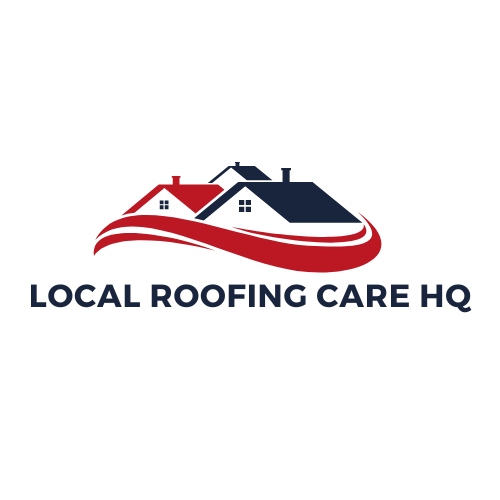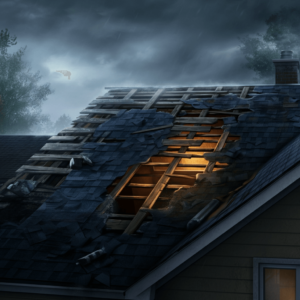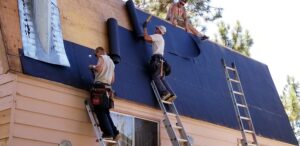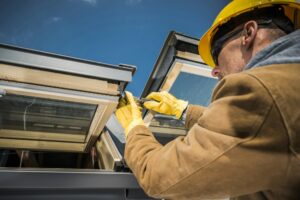When evaluating roofing options for your project, flat roofs frequently emerge as a consideration due to their distinct aesthetics and functional advantages.
This article examines the advantages and disadvantages of flat roofs, enabling you to make an informed decision.
We will provide guidance on selecting the appropriate installation contractor, highlighting essential factors such as experience, licensing, and material selection.
Additionally, you will gain insights into the installation process and effective maintenance strategies to extend the lifespan of your roof.
Explore this comprehensive overview to acquire the knowledge you need.
Why Choose a Flat Roof for Your Project?
Selecting a flat roof for a project can provide numerous advantages, particularly when evaluating aspects such as durability, energy efficiency, and maintenance ease. Flat roofs are becoming increasingly favored in both residential and commercial construction due to their contemporary aesthetics and practical benefits.
They offer exceptional waterproofing capabilities and insulation options, making them suitable for a wide range of climates and architectural designs. Furthermore, flat roofing systems can accommodate various materials, allowing for customization in color and texture, thereby enhancing the overall appearance of the property.
What Are the Advantages of Flat Roofs?
Flat roofs present numerous advantages that render them an attractive option for many property owners, including enhanced waterproofing and insulation properties. These roofs are engineered to endure diverse weather conditions, ensuring long-term durability while minimizing maintenance requirements.
Their streamlined design can elevate the overall aesthetic appeal of both residential and commercial structures. Furthermore, flat roofing systems can contribute to energy efficiency, potentially reducing heating and cooling expenses.
A particularly noteworthy benefit of flat roofing systems is their cost-effectiveness; they typically necessitate fewer materials and reduced labor during installation when compared to traditional pitched roofs, resulting in substantial savings.
Research indicates that flat roofs can lower energy costs by as much as 20% due to their ability to accommodate reflective materials that mitigate heat absorption.
The ease of maintenance is another significant advantage, as flat roofs facilitate easier access for repairs and inspections, in contrast to sloped roofs, which can pose challenges for navigation.
Property owners may also explore the installation of green roofs on flat surfaces, which not only enhance visual appeal but also improve insulation and promote environmental sustainability.
In summary, the combination of durability, efficiency, and contemporary design positions flat roofs as a prudent investment.
What Are the Disadvantages of Flat Roofs?
While flat roofs offer numerous advantages, they also present certain disadvantages that property owners should carefully consider, particularly in relation to drainage and waterproofing challenges. These roofs can be prone to standing water, which may lead to leaks and necessitate proactive maintenance.
Additionally, the lifespan of flat roofing materials is often shorter compared to sloped roofs, resulting in more frequent repairs and potential replacements. Weather conditions significantly influence the effectiveness and longevity of flat roof installations.
For example, flat roofs are more susceptible to damage from heavy snowfall or accumulating debris, as the absence of a slope can impede effective runoff. This accumulation may increase weight and stress on the underlying structure, heightening the risk of punctures or structural failure. Furthermore, property owners may face issues related to UV exposure, as flat roofs can deteriorate more rapidly under direct sunlight.
To address these challenges, it is essential to invest in adequate drainage solutions, such as scuppers or internal drainage systems. Additionally, incorporating reflective coatings can offer protection against UV damage, thereby extending the roof’s overall lifespan.
How to Choose the Best Flat Roof Installation Contractor?
Selecting the appropriate contractor for a flat roof installation project is essential to ensure high-quality workmanship and client satisfaction.
A licensed and experienced contractor can offer reliable estimates and quotes, assisting you in navigating the various roofing materials and techniques available.
It is imperative to evaluate a contractor’s portfolio and seek references to assess their expertise and reputation within the industry.
By considering these factors, you can make a more informed decision that aligns with your project requirements and budget.
1. Check for Experience and Expertise
When selecting a contractor for flat roof installation, assessing their experience and expertise is crucial to ensuring a successful outcome. Contractors with extensive experience are more likely to understand the unique challenges associated with flat roofing systems and can provide customized solutions.
Reviewing online feedback and obtaining references can offer valuable insights into the contractor’s workmanship and project management capabilities.
A knowledgeable contractor not only comprehends the complexities of flat roof materials but also remains informed about the latest industry standards and innovations. This expertise can significantly impact the durability and longevity of the installation.
Client testimonials serve as a reflection of the contractor’s reliability and service quality, which can be essential when comparing various candidates. Therefore, dedicating time to evaluate both experience and customer feedback can facilitate a more informed decision, ultimately enhancing overall project satisfaction and reducing the likelihood of future issues.
2. Look for Proper Licensing and Insurance
Ensuring that a flat roof installation contractor possesses the appropriate licensing and insurance is a fundamental step in protecting both oneself and one’s investment. Licensed contractors are required to adhere to local regulations, demonstrating their expertise in roofing standards and safety protocols. Insurance coverage serves not only to protect against workplace accidents but also enhances client satisfaction by ensuring that potential liabilities are managed effectively.
When clients opt for experienced professionals, they can be confident in the quality of work being executed. Such contractors are typically better equipped to navigate the complexities associated with roofing projects, including compliance with building codes and the implementation of safety measures that safeguard both personnel and the homeowner.
The assurance that all necessary precautions are being taken fosters trust and cultivates a positive working relationship. Ultimately, this dedication to safety and compliance not only protects the contractor but also reassures clients that their project will be completed to the highest standards, thereby promoting long-term satisfaction with the investment.
4. Inquire About Materials and Techniques Used
Inquiring about the materials and techniques utilized by a prospective flat roof installation contractor is crucial for ensuring long-term durability and energy efficiency. Various roofing systems, such as TPO, EPDM, and PVC, each provide distinct advantages and require specific installation methods. A thorough understanding of these options enables you to make an informed decision that aligns with your project specifications.
Each material differs not only in cost but also in performance under varying weather conditions. For example, TPO is recognized for its reflective properties, which can contribute to reduced cooling expenses, while EPDM is esteemed for its resilience to extreme temperatures and long-term durability.
Conversely, PVC excels in its ability to resist fire and chemicals. The importance of proper installation techniques cannot be overstated; even the highest quality materials may fail if not applied correctly.
Ensuring that your contractor adheres to industry standards and employs precise waterproofing methods can significantly enhance the lifespan of your roof, thereby preventing costly repairs in the future.
5. Get Multiple Quotes and Compare
Obtaining multiple quotes and estimates from various contractors is essential for gaining valuable insights into pricing and ensuring adherence to your budget for flat roof installation. By comparing these quotes, you can assess the scope of work, the materials included, and the overall project timelines. This process also presents an opportunity to negotiate terms and secure the best value for your investment.
To facilitate an efficient process, it is advisable to begin by clearly defining your project requirements, enabling contractors to provide more accurate estimates. When contacting potential contractors, it is prudent to pose specific inquiries regarding their experience with flat roofing, the types of materials they recommend, and their policies on warranties and project completion timelines.
Furthermore, consider requesting references from previous clients to evaluate satisfaction levels. As you compare quotes, pay attention to any discrepancies in materials or costs that may influence the overall quality of the installation. It is important to discuss your budget candidly; a reputable contractor may propose alternative solutions or modifications that can help reduce costs while still meeting your standards.
What to Expect During the Flat Roof Installation Process?
A comprehensive understanding of the flat roof installation process is essential for managing expectations and ensuring smooth project execution.
The process typically begins with a thorough inspection and assessment of the existing roofing system, followed by careful preparation and planning.
During the installation phase, skilled contractors will utilize high-quality materials while strictly adhering to safety regulations and project timelines.
Consistent communication throughout the process is vital for ensuring alignment with the established project goals.
1. Inspection and Assessment
The initial step in the flat roof installation process involves a comprehensive inspection and assessment of the existing roofing system. This evaluation enables contractors to identify any underlying issues that may require attention prior to installation, such as leaks or structural damage.
Furthermore, it provides a more accurate estimate of the materials and labor necessary for the project.
During this phase, contractors conduct a meticulous examination of various components of the roofing system, including drainage systems, the integrity of the substructure, and the condition of existing membranes. They also assess signs of wear and tear, such as blistering or cracking, which could compromise the roof’s longevity.
Understanding these factors is essential, as it not only ensures that the new roofing will function optimally but also reduces the likelihood of incurring costly repairs in the future.
By addressing these critical elements at the outset, clients benefit from a strong foundation, ultimately enhancing the overall maintenance and efficiency of their roofing system.
2. Preparation and Planning
Proper preparation and planning are critical to ensuring a successful flat roof installation, thereby minimizing potential delays and safety hazards. Experienced contractors will develop a comprehensive plan that outlines the necessary materials, tools, and labor required for the project, while also taking into consideration timelines and weather conditions.
This proactive approach is instrumental in facilitating a smooth and efficient installation process.
A thorough assessment of the work site is conducted to identify any pre-existing issues that could impact the installation. This includes evaluating drainage problems or structural concerns that may require immediate attention.
Safety measures are prioritized, with contractors implementing protective protocols and providing adequate training for their teams, thereby reinforcing a culture of safety throughout the project.
Regular communication with clients is maintained to ensure timely updates and adjustments, which helps keep the project on schedule and enhances trust.
Through meticulous planning and strict adherence to safety standards, contractors aim to deliver results that not only meet but exceed client expectations.
3. Installation of Roofing Materials
The installation of roofing materials represents a critical phase in the flat roofing process, where the importance of quality craftsmanship and proper techniques cannot be overstated. Contractors will utilize various methods tailored to the specific type of material employed—such as TPO, EPDM, or PVC—to ensure effective waterproofing and long-lasting durability.
Strict adherence to safety measures is maintained during this stage to mitigate the risk of accidents on the job site.
Before the commencement of installation, it is essential to prepare the substrate, ensuring that it is clean and free of debris. The use of an appropriate adhesive or the mechanical fastening of sheets is standard practice, particularly for TPO and PVC, whereas EPDM typically necessitates a specific bonding agent.
During this phase, workers don protective gear, including helmets and harnesses, to safeguard against falls and injuries. Quality workmanship is not merely an option; it is a necessity, as improper installation or the use of substandard materials can lead to significant issues, including leaks and costly repairs in the future.
Consequently, the importance of attention to detail and adherence to best practices should not be underestimated, as these factors ensure that the roof will perform effectively for years to come.
4. Finishing Touches and Clean-up
After the roofing materials have been installed, the finishing touches and clean-up are critical to the overall success of the flat roof project. This process involves ensuring that all materials are properly secured and that any debris is removed from the job site. Conducting a final inspection is essential to identify any potential issues that may require immediate attention, thereby contributing to client satisfaction and facilitating long-term maintenance.
These final details not only enhance the visual appeal of the roofing installation but also ensure compliance with safety standards and building regulations. It is imperative that the crew pays attention to even the smallest aspects, such as sealing any gaps and verifying that drainage systems are functioning correctly.
Clients appreciate being informed about the significance of these steps, as they ultimately reflect their investment in the durability and longevity of their roofing system. A thorough clean-up and meticulous inspection can prevent future maintenance challenges, fostering trust and satisfaction with the services provided.
How to Maintain and Extend the Life of Your Flat Roof?
Maintaining a flat roof is crucial for extending its lifespan and ensuring optimal performance over time.
Conducting regular inspections can facilitate the early identification of leaks and other issues, enabling timely repairs that can prevent more significant problems in the future.
Furthermore, routine maintenance and the application of waterproofing materials can significantly enhance both the energy efficiency and durability of the flat roofing system.
1. Regular Inspections and Maintenance
Regular inspections and maintenance are essential for ensuring the longevity and efficiency of a flat roof system. By scheduling routine assessments, potential issues such as cracks or water pooling can be identified early, preventing costly repairs that may arise if these concerns are left unaddressed. Incorporating waterproofing maintenance can significantly enhance the overall performance of the roof.
These inspections should concentrate on various critical aspects, including the condition of flashing, drainage systems, and the integrity of seams. Identifying signs of wear, such as blistering or peeling, is vital during these evaluations.
Proactive maintenance not only preserves the aesthetic appeal of the roof but also protects the underlying structure from water damage and mold growth. Ultimately, a well-maintained flat roof can result in considerable savings and reduced stress by minimizing the need for emergency repairs and extending the lifespan of the entire system.
2. Address Any Issues Promptly
Promptly addressing any issues is essential for maintaining the integrity of flat roofs and ensuring client satisfaction. Whether dealing with a minor leak or a more significant structural concern, timely repairs can prevent further damage and extend the lifespan of the roof.
Regular communication with contractors regarding any emerging problems is vital for effective maintenance.
Flat roofs can experience a variety of issues, including pooling water, punctures, and membrane separation, all of which necessitate swift intervention. Unattended problems can escalate rapidly, resulting in costly repairs and potential safety hazards.
It is imperative to schedule regular inspections to identify these concerns early, as seasonal weather can exacerbate existing vulnerabilities. By adopting a proactive approach and seeking timely repairs, property owners not only protect their investment but also ensure that the living or working environment remains safe and comfortable.
Understanding the common pitfalls associated with flat roofing systems equips individuals to take preventive measures before minor flaws develop into major complications.
3. Keep the Roof Clean and Clear of Debris
Maintaining a clean and unobstructed flat roof is essential for ensuring its functionality and preventing drainage issues. Accumulated debris, such as leaves and other materials, can impede proper drainage, resulting in water pooling and potential leaks.
Regularly scheduled cleanings and inspections are crucial for keeping the roof in optimal condition. This proactive approach not only extends the lifespan of the roofing materials but also helps homeowners avoid costly repairs in the future.
It is advisable to inspect the roof at least twice a year, particularly during the spring and autumn months when debris accumulation is most likely.
Immediate removal of leaves, branches, and other obstructions is necessary to prevent potential damage. Additionally, the installation of gutter guards or drains can further enhance roof performance.
Regular maintenance checks can also aid in identifying minor issues before they escalate, ensuring a long-lasting and efficient flat roof.
4. Consider Adding Protective Coatings
The consideration of incorporating protective coatings on flat roofs can significantly enhance their lifespan and waterproofing capabilities. These coatings act as an additional barrier against harsh weather conditions and can improve energy efficiency by reflecting ultraviolet rays. Regular maintenance and timely reapplication of these coatings are essential to ensure optimal performance.
There are various types of protective coatings available, each offering unique advantages tailored to specific roofing requirements.
- For example, elastomeric coatings provide exceptional elasticity, allowing them to expand and contract with temperature fluctuations, thereby minimizing the risk of cracking.
- Alternatively, silicone coatings are recognized for their superior waterproofing properties, making them particularly suitable for regions that experience heavy rainfall.
Investing in these protective solutions not only prolongs the service life of a flat roof but also reduces repair costs over time, providing property owners with peace of mind.
5. Consult with Your Contractor for Tips and Advice
Consulting with a contractor for maintenance tips and advice can provide invaluable insights into best practices for extending the life of a flat roof. A contractor’s experience and knowledge can assist in identifying specific maintenance schedules and recommend appropriate products for inspections and repairs.
By actively engaging in this collaborative relationship, homeowners gain access to a wealth of information that contractors can offer. For example, contractors may advise on the regular removal of debris from the roof surface to prevent drainage issues or recommend the installation of reflective coatings to reduce heat absorption.
Contractors are often well-versed in local weather patterns and their potential impact on roofing materials, advising homeowners on seasonal inspections to identify potential issues early. Their recommendations regarding product choices—such as high-quality sealants or membranes—can lead to more durable solutions, underscoring the importance of a contractor’s expertise in proactive home maintenance.
Frequently Asked Questions
1. What should I look for when choosing a flat roof installation contractor?
When choosing a flat roof installation contractor, it is important to consider their experience and qualifications, as well as their reputation and customer reviews. You should also make sure they are licensed and insured, and ask for examples of their past work.
2. How can I ensure the contractor will use quality materials for my flat roof installation?
It is important to ask the contractor about the materials they plan to use for your flat roof installation. Make sure they are using high-quality materials that are suitable for your specific project and will provide long-lasting durability.
3. What factors can affect the cost of a flat roof installation project?
The cost of a flat roof installation can vary depending on factors such as the size and complexity of the roof, the materials used, and the location of the project. It is best to get quotes from multiple contractors to compare prices and find the best deal for your budget.
4. How can I ensure the contractor will complete the project on time?
Before hiring a flat roof installation contractor, make sure to discuss a timeline for the project and include it in the contract. You can also ask for references from past clients to see if the contractor has a history of completing projects on time.
5. Are there any specific permits or regulations I should be aware of for my flat roof installation?
Depending on your location, there may be specific permits or building codes that need to be followed for a flat roof installation. It is important to consult with your contractor and local authorities to ensure that all necessary permits and regulations are met.
6. What should I do if I am not satisfied with the work of the flat roof installation contractor?
If you are not satisfied with the work of the flat roof installation contractor, it is important to address your concerns with them directly. If they are unable to resolve the issue, you may need to seek a third-party mediator or take legal action. Make sure to carefully review the contract and any warranties before taking any action.





